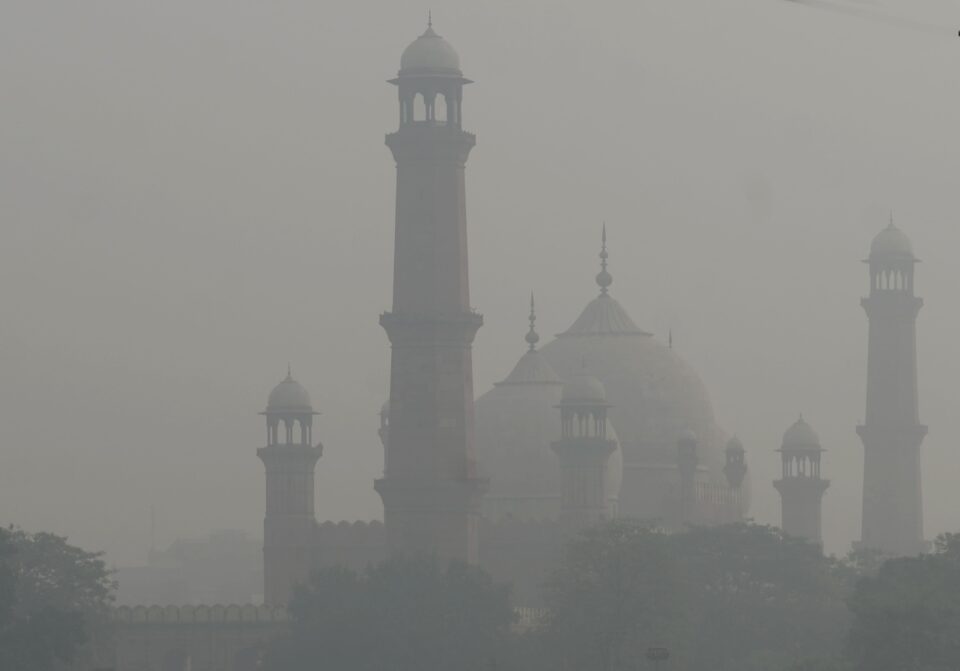Why Pakistan Must Treat Air Pollution as a National Emergency
By Maria Iqbal, Ali Osama Malik, Nizar Noorali Bhulani, Talaiha Chughtai, Taha Sabri & Mohsin Ali Mustafa
Originally published in December 2019 | Updated for DawnMedia’s Air Pollution Conference in Lahore
Pakistan’s Air Quality Crisis
Air pollution in Pakistan has reached alarming levels, posing a major threat to public health, economic productivity, and the country’s future. According to the World Air Quality Report, Pakistan ranked as the second most polluted country in 2018, with Lahore and Karachi consistently among the top 10 most polluted cities in the world.
At the time, Lahore’s Air Quality Index (AQI) stood at 188, and Karachi’s at 182 — far above the safe limit of 50. During November, Lahore recorded AQI levels exceeding 300 on multiple days, a figure that constitutes a public health emergency.
Experts now warn that air pollution reduces life expectancy in Pakistan more than smoking, tuberculosis, or unsafe water, making it one of the most severe public health challenges the nation faces.
How Air Pollution Damages Health
1. Respiratory Health
Air pollution contains fine particles and toxic chemicals that directly damage the lungs. These pollutants destroy protective linings, paralyze the cilia (tiny hair-like structures that clear harmful particles), and increase the risk of asthma, pneumonia, chronic lung disease, and lung cancer.
The World Health Organization (WHO) estimates that air pollution causes nearly 10 million deaths globally each year, with lung-related diseases making up a large portion of these fatalities. In Pakistan, where many households still rely on solid fuels for cooking and heating, exposure to indoor air pollution further compounds the problem — especially for women and children.
2. Cardiovascular Health
Numerous studies have established a strong link between Particulate Matter 2.5 (PM2.5) — tiny particles that penetrate deep into the lungs and bloodstream — and heart disease.
PM2.5 exposure increases the risk of heart attacks, strokes, high blood pressure, and diabetes. Each 10 µg/m³ rise in PM2.5 is associated with a 10% higher risk of death among vulnerable groups.
In Pakistan’s major cities, daily PM2.5 levels often exceed 100 µg/m³, far above international safety standards. These dangerously high concentrations may have long-term effects that researchers have yet to fully understand, but early evidence suggests an urgent need for policy intervention.
3. Mental Health Impacts
Emerging research shows that air pollution doesn’t just harm physical health — it also affects the brain. Pollutants entering the bloodstream can disrupt brain function, leading to poor concentration, memory problems, emotional instability, and reduced productivity.
Mental health professionals in Pakistan report higher relapse rates among patients during winter, when smog intensifies. Long-term exposure may increase the risk of depression, anxiety, and cognitive decline, with children being especially vulnerable.
4. Effects on Children and Early Development
Air pollution poses a serious threat to children’s growth and cognitive development. The UNICEF estimates that around 12 million South Asian children are at risk from air pollution exposure.
Toxic air particles can cross the blood-brain barrier, disrupt neural connections, and cause oxidative stress — leading to reduced IQ, learning difficulties, and even higher risks of ADHD and autism. Chronic exposure during early life stages can impair school performance and overall potential.
The Way Forward: Urgent Action Needed
Pakistan must now treat air pollution as a national emergency. The response must be multi-tiered, addressing both immediate and long-term challenges.
Short-Term Measures (Citizen Level):
-
Use air purifiers at home and workplaces. Affordable options are now available locally.
-
Wear protective masks (N95) during outdoor exposure, especially in smog season.
-
Reduce use of solid fuels and avoid burning waste or crop residue.
Medium- and Long-Term Measures (Policy Level):
-
Enforce stricter industrial and vehicular emission standards.
-
Promote renewable energy sources and electric public transport.
-
Improve urban green spaces and afforestation programs.
-
Strengthen air quality monitoring and public data transparency.
A Call for Collective Action
The situation is dire — but reversible. Policymakers, industrialists, and citizens must come together to fight this silent killer. Every breath of clean air counts.
If Pakistan continues on its current trajectory, an apocalyptic future is not an exaggeration — it’s a probable reality. The time to act is now.

